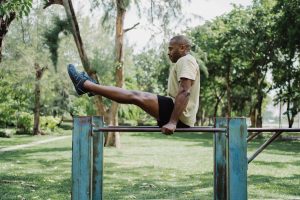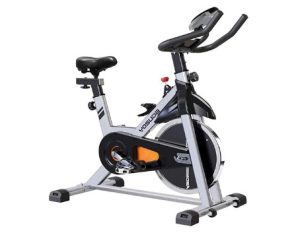
In recent years, home workouts have gained immense popularity as people seek convenient and flexible ways to stay fit. With the advancement of technology and the availability of various fitness gear, it has become easier than ever to create a fully functional home gym. In this comprehensive guide, we will explore the essential fitness gear for home workouts that can help you achieve your fitness goals right in the comfort of your own home.
Introduction
Engaging in regular physical activity is crucial for maintaining good health and overall well-being. Home workouts offer a convenient solution, especially for individuals with busy schedules or those who prefer privacy. To make the most out of your home workout routine, it’s essential to have the right fitness gear that caters to your specific needs and goals.
Setting Up Your Home Workout Space
Embarking on your journey towards a healthier lifestyle through home workouts requires more than just the right equipment. It entails creating an environment that fosters motivation, safety, and consistency. Prior to delving into the realm of essential fitness gear, it’s paramount to establish a well-thought-out workout space within the confines of your home.
Begin by strategically selecting the perfect spot for your home workout haven. Take into account the available space, ensuring it’s ample enough to accommodate your movements and exercises comfortably. A room with sufficient square footage or a dedicated corner can serve as your fitness sanctuary. This spatial consideration is vital not only for executing exercises without constraints but also for your psychological well-being during workouts.
Ventilation plays a pivotal role in maintaining a comfortable and energizing atmosphere. Choose a location with good airflow to prevent stuffiness or discomfort during intense workouts. An open window or a fan can make a substantial difference, infusing the space with fresh air and revitalizing your senses as you break a sweat.
Lighting is another crucial element often overlooked. Natural light is ideal, as it replicates the outdoor environment and boosts your mood. If natural light isn’t abundant, opt for bright and well-distributed artificial lighting. A well-lit environment not only ensures your safety during exercises but also keeps you engaged and motivated throughout your routine.
Before you jump into lunges and squats, take a meticulous sweep of your chosen space. Identify and eliminate potential hazards, such as loose rugs, protruding furniture corners, or tangled cords. Creating a clutter-free zone not only prevents accidents but also instills a sense of focus and tranquility, allowing you to fully immerse yourself in your workout.
Moreover, consider the aesthetic aspects of your workout space. Personalize it with motivational posters, vibrant colors, or elements that resonate with your fitness goals. This personal touch can transform your workout space from a mere location for exercise into a source of inspiration and dedication.
As you lay the foundation for your home workout space, envision it as more than just a physical setting. It’s a realm where your ambitions, discipline, and health converge. A well-designed workout space becomes a testament to your commitment and a catalyst for consistent progress. By investing time and effort into crafting a suitable environment, you set yourself up for success in your fitness journey. So, before you even think about the weights and mats, take the time to sculpt a workout haven that nurtures your body and spirit alike.
Cardiovascular Fitness Gear
- Treadmill: A staple for cardio workouts, treadmills allow you to walk, jog, or run indoors, simulating the experience of outdoor running.
- Stationary Bike: Ideal for low-impact cardiovascular exercises, stationary bikes provide an effective workout while being gentle on the joints.
- Elliptical Trainer: Combining the benefits of running, cycling, and stair climbing, elliptical trainers offer a full-body workout with minimal impact on the joints.
- Jump Rope: An inexpensive yet highly effective cardio tool, jump ropes improve cardiovascular endurance, coordination, and agility.
Strength Training Equipment
- Dumbbells: Versatile and compact, dumbbells are essential for strength training exercises targeting various muscle groups.
- Resistance Bands: These flexible bands provide resistance during exercises and can be used for both upper and lower-body workouts.
- Kettlebells: Suitable for dynamic movements, kettlebells enhance strength, endurance, and overall functional fitness.
- Adjustable Weight Bench: A versatile piece of equipment that allows for a wide range of strength training exercises, such as chest presses and tricep dips.
Flexibility and Mobility Tools
- Yoga Mat: Provides a comfortable and non-slip surface for yoga, Pilates, and stretching exercises.
- Foam Roller: Helps release muscle tension, increase blood flow, and improve flexibility through self-myofascial release techniques.
- Resistance Bands: Apart from strength training, resistance bands can be used for stretching and mobility exercises to improve flexibility and range of motion.
Recovery and Self-Care Products
- Massage Roller Stick: Relieves muscle soreness and tension by applying pressure to specific trigger points.
- Vibrating Massage Ball: A portable self-massage tool that helps reduce muscle stiffness and promotes faster recovery.
- Compression Sleeves: Designed to improve circulation and reduce muscle fatigue, compression sleeves are particularly beneficial for leg workouts.
Monitoring and Tracking Devices
- Fitness Tracker: Worn on the wrist, fitness trackers monitor your daily activity, heart rate, and sleep patterns, and provide valuable insights to help you track your progress.
- Heart Rate Monitor: Provides real-time heart rate data during workouts, allowing you to optimize your training intensity and stay within your target heart rate zone.
Workout Accessories
- Workout Mat: Provides cushioning and support for floor exercises, such as planks, sit-ups, and stretching.
- Exercise Ball: Excellent for core strengthening exercises and stability training.
- Skipping Rope: A portable and effective cardio tool that can be used indoors or outdoors for high-intensity workouts.
Safety Considerations for Home Workouts
Warming Up Before Your Workout:
Warming up before exercise is a crucial step in preparing your body for physical activity. It involves engaging in light cardiovascular movements and dynamic stretches to increase blood flow to your muscles and gradually elevate your heart rate. This process helps loosen up your joints, enhance flexibility, and improve the overall range of motion. By warming up, you’re effectively signaling to your body that it’s time to transition from a state of rest to one of increased exertion. This initial phase minimizes the risk of sudden strain or injury that could occur when jumping into intense exercise without proper preparation.
Prioritizing Proper Form and Technique:
Maintaining proper form and technique during workouts is vital to preventing injuries and optimizing the effectiveness of your exercises. Incorrect form can lead to unnecessary stress on joints, muscles, and ligaments, increasing the likelihood of strain or overuse injuries. Seeking guidance from fitness professionals, personal trainers, or reputable online tutorials can provide valuable insights into the correct way to perform various exercises. Learning how to engage the right muscles and move with precision not only reduces the risk of injury but also ensures that you’re targeting the intended muscle groups for maximum results.
Ventilation and Hydration During Workouts:
Proper ventilation and hydration during workouts are essential for maintaining your body’s internal balance. Overheating can lead to discomfort, dizziness, and even heat-related illnesses, while dehydration impairs physical performance, reduces endurance, and impedes recovery. Ensuring that your workout environment is well-ventilated helps regulate your body temperature. Additionally, staying hydrated by drinking water before, during, and after exercise supports the transport of nutrients, electrolytes, and oxygen to muscles, optimizing performance and minimizing the risk of cramps or fatigue.
Gradual Progression in Intensity and Duration:
Gradually increasing the intensity and duration of your workouts is a key principle to avoid overexertion and burnout. Rapidly escalating the intensity can strain your muscles, increase the risk of injury, and lead to excessive fatigue. Incremental progression allows your body to adapt to new challenges and stressors over time, resulting in steady improvements without subjecting your body to sudden excessive demands. This approach not only reduces the likelihood of injury but also promotes sustainable, long-term fitness gains.
Consultation with Healthcare Professionals:
Before embarking on any new exercise program, especially if you have underlying health conditions or injuries, it’s wise to consult with a healthcare professional. A medical assessment can identify any potential limitations, recommend exercises that are safe for your specific situation, and guide you toward an exercise plan that aligns with your health goals. This proactive approach ensures that you’re pursuing activities that are appropriate for your individual circumstances, minimizing the risk of exacerbating existing issues and promoting overall well-being.
Conclusion
The Essential Fitness Gear for Home Workouts guide shows that Creating a well-equipped home gym with essential fitness gear opens up a world of possibilities for staying fit and healthy. From cardiovascular equipment and strength training tools to flexibility and recovery aids, there are numerous options to cater to your specific fitness goals. By investing in the right gear and following safety guidelines, you can enjoy effective workouts from the comfort of your own home.
FAQs
1. Can I achieve the same results with home workouts as I would in a gym?
While home workouts can be highly effective, the results may vary depending on individual factors, consistency, and the specific fitness gear used. With proper planning and dedication, you can achieve excellent results with home workouts.
2. How much space do I need to set up a home workout area?
The space required for a home workout area depends on the type of exercises you plan to do and the fitness equipment you intend to use. As a general guideline, ensure you have enough space for movement and can comfortably perform exercises without any obstructions.
3. Can I lose weight with home workouts alone?
Yes, you can lose weight with home workouts alone by incorporating a combination of cardiovascular exercises, strength training, and a healthy diet. Consistency and a calorie deficit are key factors in achieving weight loss goals. just follow this guide of Essential Fitness Gear for Home Workouts
4. What are some cost-effective alternatives for expensive fitness gear?
If budget is a concern, there are several cost-effective alternatives available. For example, you can substitute dumbbells with water bottles or resistance bands with towels. Additionally, bodyweight exercises require little to no equipment and can be highly effective.
5. How often should I replace my fitness gear?
The lifespan of fitness gear varies depending on factors such as usage, quality, and maintenance. It’s recommended to regularly inspect your equipment for signs of wear and tear and replace them as needed to ensure optimal safety and performance.
In conclusion, setting up a well-rounded collection of Essential Fitness Gear for Home Workouts allows you to enjoy the convenience and flexibility of exercising at home while achieving your fitness goals. By carefully selecting the essential equipment and incorporating it into a tailored workout routine, you can embark on a journey to better health and well-being.
Home Gym Equipment: Click here




